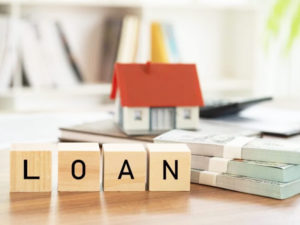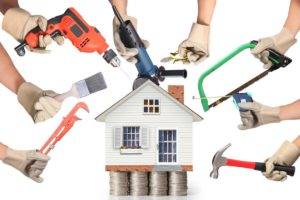[ad_1]
Please use the menu below to navigate to any article section:
A home improvement loan is a term that is increasingly being used in Australia but is largely a US phrase that’s been imported.

People may choose a home improvement loan when they don’t want to use the property as collateral, or they want to borrow an amount that is kept separate from the mortgage account.
They might do this if they were an investor and there was an accounting reason to keep the debts separated, for example.
House flippers, people who buy a property to make quick, cosmetic improvements before putting it back on the market, might prefer a home improvement loan.
A home improvement loan is a type of personal loan, so it doesn’t usually require any collateral.
The interest rate will be higher on this type of loan, but if there is a default the property is not at risk.
For this reason, it can sometimes be the preferred debt product.

Generally, due to the higher interest rate, home improvement loans are rarely up to or above $100,000.
Don’t confuse a home improvement loan with a construction loan.
A construction loan is a specific product that is used when building a new home.
It has a range of facilities inbuilt that are tailored to the construction process and it can be a more complex and complicated product that requires more involvement from the bank.
How to apply for a home improvement loan
If you’re thinking about renovating and don’t want to use your property for collateral, a home equity loan, or a personal loan, from the bank may be the way forward.
This might be especially useful if you’re planning to flip the house, or if you’re an investor and with a few properties and, for accounting or tax reasons, like to keep the debts separated.
The application process is fairly straightforward and similar to applying for any other type of loan.
You will complete paperwork and the bank will verify the details, including a close check of your credit history.
The lender will seek full details of your financial history, including your current situation.
You’ll need to list assets, debts, income and any other significant details that could impact your ability to repay the loan.
Often, (but not always) the bank will ask about the renovations and what you’re planning.
They may ask to see plans and any additional information you may have relevant to the work being done, such as budgets, contracts and anything else that could result in cost overruns or budget blowouts.
How to repay a home improvement loan

The bank or lending institution will create an account and give you a schedule for repayments, along with interest amounts.
Home improvement loans, being unsecured and at a higher interest rate than an equity loan, or a redraw, will have a shorter repayment period.
Repayments are likely to be higher than with an equity loan or a top-up loan from the bank because of the reduced loan period and higher interest rate, so be sure to factor this in when deciding which loan to apply for.
Also, be aware that there may be penalty fees for repaying early and there will almost definitely be penalty fees for late payments.
Pros and cons of a home improvement loan
As mentioned earlier, the type of person taking out a home improvement loan is an investor who may be running two or three properties as a business and potentially flipping at least one of them.

It will be an amount added to the mortgage and will have the advantage of being at a lower interest rate with a longer repayment window.
In addition, the top-up loan will be fast to secure, particularly if you have a good relationship with your current lender.
If you’ve been making consistent repayments and haven’t missed any, then a top-up loan will be a very simple process.
You’ll be able to start the procedure online, in most cases, and it may be approved within a few days.
Get advice
If you’re still considering a home improvement loan, as opposed to topping up the mortgage, then make sure you get advice.
An expert will be able to advise you if this is the best way forward for your circumstance and will be able to help with the application process – whichever way you decide to go!
[ad_2]
Source link
